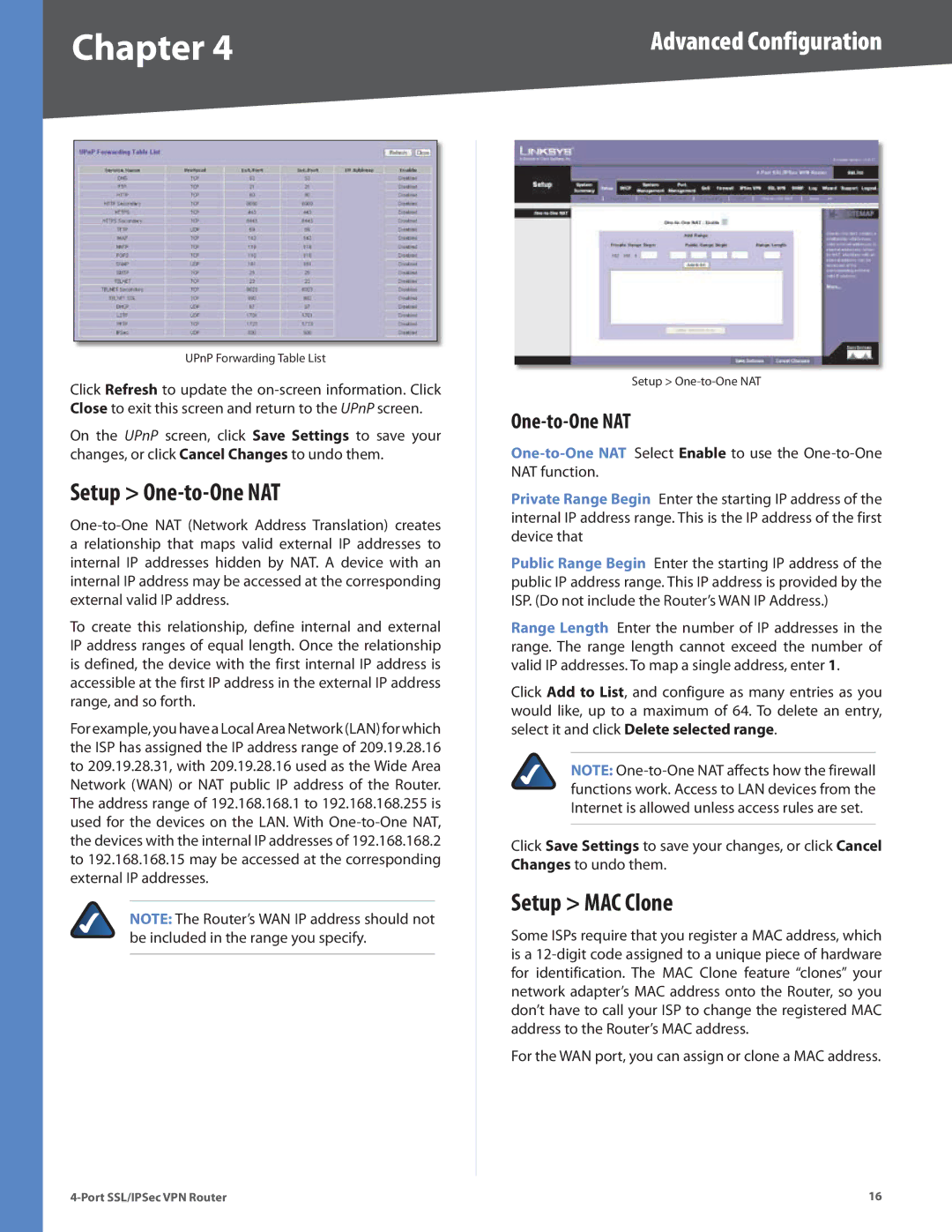
Chapter 4 | Advanced Configuration |
|
|
|
|
UPnP Forwarding Table List
Click Refresh to update the
On the UPnP screen, click Save Settings to save your changes, or click Cancel Changes to undo them.
Setup > One-to-One NAT
To create this relationship, define internal and external IP address ranges of equal length. Once the relationship is defined, the device with the first internal IP address is accessible at the first IP address in the external IP address range, and so forth.
For example, you have a Local Area Network (LAN) for which the ISP has assigned the IP address range of 209.19.28.16 to 209.19.28.31, with 209.19.28.16 used as the Wide Area Network (WAN) or NAT public IP address of the Router. The address range of 192.168.168.1 to 192.168.168.255 is used for the devices on the LAN. With
NOTE: The Router’s WAN IP address should not be included in the range you specify.
Setup >
One-to-One NAT
Private Range Begin Enter the starting IP address of the internal IP address range. This is the IP address of the first device that
Public Range Begin Enter the starting IP address of the public IP address range. This IP address is provided by the ISP. (Do not include the Router’s WAN IP Address.)
Range Length Enter the number of IP addresses in the range. The range length cannot exceed the number of valid IP addresses. To map a single address, enter 1.
Click Add to List, and configure as many entries as you would like, up to a maximum of 64. To delete an entry, select it and click Delete selected range.
NOTE:
Click Save Settings to save your changes, or click Cancel Changes to undo them.
Setup > MAC Clone
Some ISPs require that you register a MAC address, which is a
For the WAN port, you can assign or clone a MAC address.
16 |
